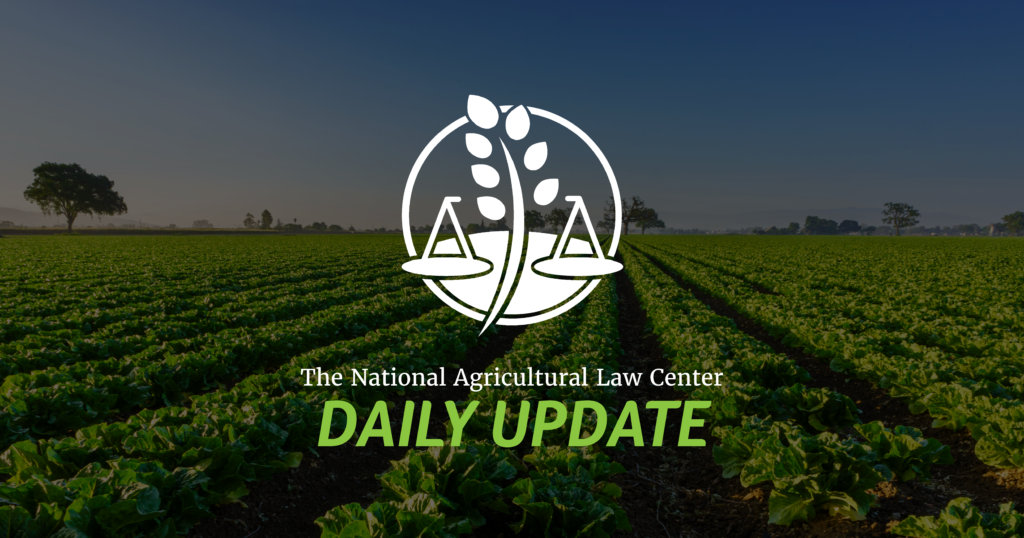A comprehensive summary of today’s judicial, legislative, and regulatory developments in agriculture and food. Email important additions HERE.
Judicial: Crop Insurance, Food Labeling
In RCR FARMS, LLC v. FEDERAL CROP INSURANCE CORPORATION, No. 20-CV-01602-RM, 2021 WL 5449068 (D. Colo. Nov. 22, 2021), the court considered whether the Risk Management Agency’s (“RMA”) good farming practices determination was arbitrary and capricious. In May of 2019 the Risk Management Agency determined that petitioner failed to follow good farming practice (“GFP”) when planting its 2018 corn crop. Petitioner argued that its corn crop consisted of twelve units and the RMA’s failure to make its GFP determination on a unit-by-unit assessment was arbitrary and capricious. The court found that petitioner failed to show that a unit-by-unit assessment would have changed the RMA’s GFP determination. Petitioner also failed to establish that it followed GFP with respect to seed population or weed control on any specific unit of the corn crop.
Petitioner also argued that RMA applied an improper standard when it concluded that petitioner’s reduced seeding rates were not consistent with GFP. The court concluded that petitioner did not show that RMA failed to examine relevant data or articulate a satisfactory explanation for its GFP determinations. The court held that the RMA’s determination was not arbitrary and capricious.
In Cruz v. D.F. Stauffer Biscuit Co., No. 20CV2402PGGJLC, 2021 WL 5119395 (S.D.N.Y. Nov. 4, 2021), the court considered whether Stauffer misled consumers to believe that their Lemon Snaps product had natural lemon flavoring as opposed to artificial flavoring. Plaintiffs’ alleged that the product’s packaging was materially misleading because reasonable consumers would expect the product’s lemon flavor to come “mainly or exclusively” from “a real lemon ingredient,” rather than from artificial flavoring.
The court found that the product’s front label did not state that it was free of artificial flavors, suggested that real lemons were the only source of the cookies’ lemon flavoring, or claimed that the flavor from real lemons constituted a certain percentage of the total lemon flavor. Therefore, the court concluded that the ingredient label’s statement that the product contains “natural and artificial flavors” was consistent with Stauffer’s representations on the front of its packaging and served as clarifying language about the source of the product’s lemon flavor. The court held that there was no material misrepresentation and dismissed the plaintiffs’ claims.
REGULATORY: EPA
ENVIRONMENTAL PROTECTION AGENCY
Notice announcing that the National Environmental Justice Advisory Council will meet on January 5, 2022, from approximately 1:00 p.m. to 4:00 p.m. Eastern Time. Info here.
Final rule establishing tolerances for residues of bifenthrin in or on multiple commodities. The Interregional Project Number 4 and FMC Corporation requested these tolerances under the Federal Food, Drug, and Cosmetic Act. Info here.
